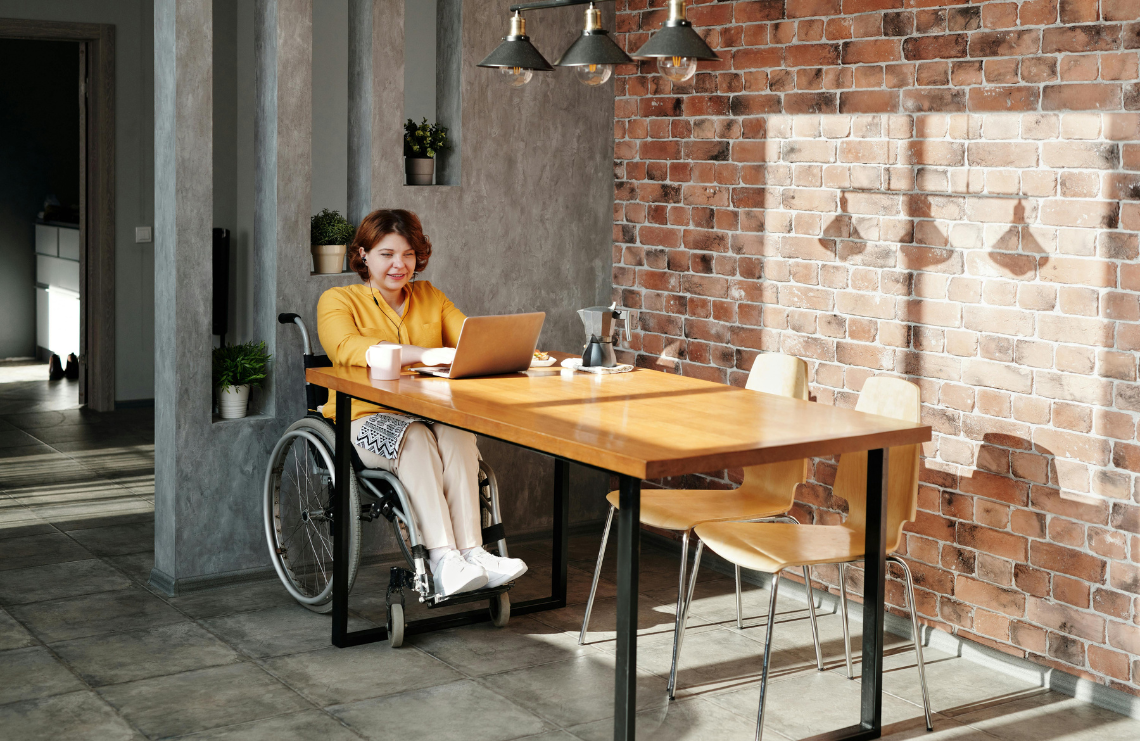With 1 in 5 Australians living with a disability, accessible housing is vital. We need robust policies for adaptable design in all homes.
It’s estimated that one in five people in Australia has some form of disability. That’s more than 4.4 million people, and more than a third of households that have at least one individual living with a disability.
Accessible housing is a key issue for people living with disabilities in Australia. Renting or owning a home is essential for independent living and a sense of wellbeing. For decades, disability campaigners have been fighting for inclusive design to become a basic standard in construction for every new home, but progress has been slow. Adaptable features are often seen as an afterthought, and this has a devastating impact on people’s lives.
The latest research shows that almost two thirds of people living with disabilities own homes, yet less than five per cent of housing stock provides accessible features. There’s clearly a huge gap in the market which is being ignored by the private sector.
Despite passing laws like the Disability Discrimination Act 1992 and the adoption of the United Nations Convention for the Rights of Persons with Disabilities in 2008, the Australian government still lacks federal policies to ensure private housing is made more accessible to those with disabilities. To have genuine change, we need a fundamental shift in how we view disability. There are many assumptions on how disability presents itself, which influences how we tackle accessibility problems.
In the past decades, more emphasis has been placed on the needs of wheelchair users and in response, public spaces like shopping areas, workplaces, and government institutions have become more accessible.
While such measures are commendable, they still don’t go as far as necessary. Only 4.4 per cent of disabled people in Australia use wheelchairs. What happens to the rest? What are their needs, and what steps are we taking to address them? Their plight is often overlooked and they continue to face severe challenges in their daily lives in housing, transportation and public spaces.
What we fail to recognise is that there’s a wide spectrum of disabilities. Some require the use of assistive devices such as wheelchairs, walkers or canes, and others are not obvious to the casual observer. These are commonly referred to as “hidden” or “invisible” disabilities, which is an umbrella term for a range of disabilities, chronic medical conditions and impairments.
In this article, we highlight disabilities that affect a person’s mobility, such as autism, Down Syndrome, Fetal Alcohol Syndrome, Tourette Syndrome, amputations, paralysis, Cerebral Palsy, Muscular Dystrophy (MD), Multiple Sclerosis (MS) and many others. A survey was conducted among people with mobility impairments which found that 73.6 per cent of respondents were living in housing that did not meet their needs. Their voices are left behind in discussions about accessible housing design yet they’re entitled to equal housing rights like any other person living with a disability.
How we can provide accessible housing for all people living with disabilities
It may not be possible to accommodate the needs of every type of disability that exists, but at the very least, residential buildings should be made adaptable, giving all disabled people the opportunity to modify them to suit their specific needs.
Environmental barriers are the major obstacle for people living with disabilities, which results in difficulties in performing daily activities at home. Providing a broad range of accessible features in living spaces can improve quality of life significantly. Right now, there’s growing discussion on accessible housing, and disability rights advocacy groups like the Building Better Homes Campaign are pushing for mandatory accessibility standards for new homes. People living with different disabilities should have a say.
Accessible housing is everyone’s problem
Accessible housing benefits the whole of society. The risk of disability increases with age, hence a significant section of our populace will experience some form of disability in the future. The number of Australians aged 75 and above is expected to rise by four million by 2060 and we must be prepared to cater to this demographic by integrating accessible features in housing.
The bottom line
Australians uphold the values enshrined in the constitution of equality, fairness and inclusion. This must extend to all corners of society and especially to minority groups who are more vulnerable and face unique challenges.
We should start by acknowledging the scale of the problem and giving a platform to all people living with disabilities in government, civil society and the media. It’s clear that relying on volunteerism to improve accessible housing has not been effective, and we need robust policies from the federal, state and local levels to reshape Australia’s building code and ensure adaptable design is incorporated into new homes. Special housing programs can provide tax incentives and other benefits to encourage developers to adhere to such regulations.
Accessible housing is a human right and we must not leave anyone with disabilities behind. The Australian government, civil society organisations and the private housing sector must play a role in ensuring accessible housing is central to their work. Only then can we have a truly just society that is respectful, nurturing and safe for all Australians.
Article Featured in Grand Designs Australia Magazine Issue 10.4

